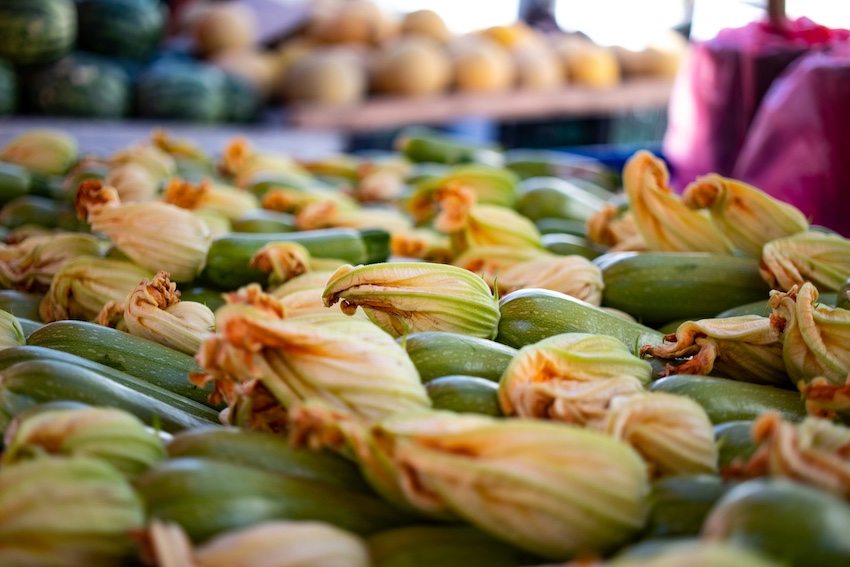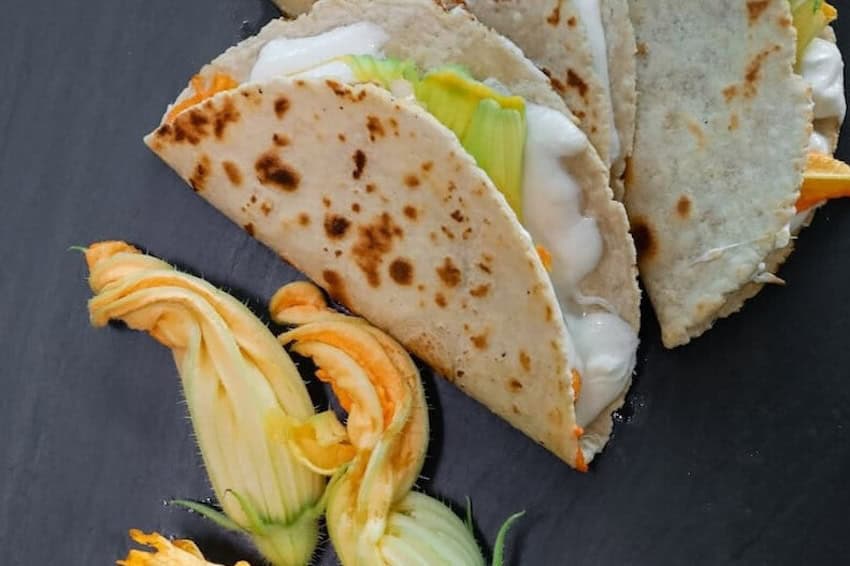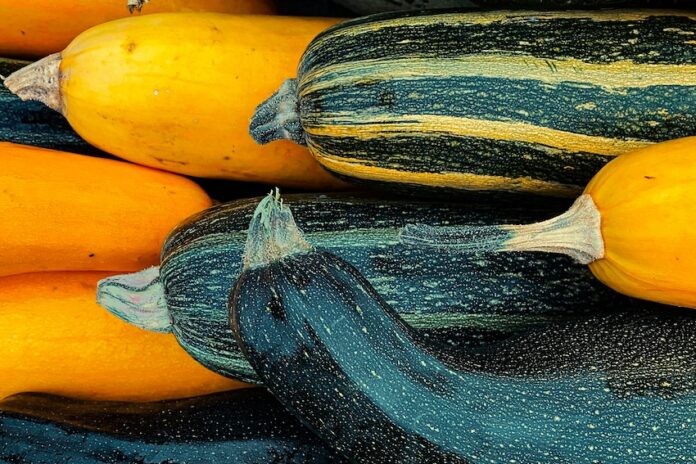Walk into a Mexican market in late October and you’ll see them piled high: squat, heavy pumpkins with mottled green skin, chilacayotes with their pale stripes, the burnished orange of Castilla squashes. They sit there quietly, a reminder that before they became Halloween props or the raw material of lattes, these plants were civilization itself.
In past articles I’ve reflected on the way modern life has reshaped our culinary traditions. In my own whitexican reality — where the grocery run means a polished Chedraui Selecto— pumpkins appear in the produce section only briefly, around Halloween, and usually as decoration rather than food.

This is a strange fate for a plant that throughout Mexican history has always occupied a central place at the table. Mesoamerican diets were built on the milpa system, a genius agricultural strategy in which corn, beans, chili, squash, and edible greens grew together. I’ve written before about corn, beans and chilies. Squash has been waiting for its turn.
Squash: The first plant
Of all the crops in the Americas, squash came first. 10,000 years ago, it was the inaugural domesticated plant of the region. Mexico, in fact, is the global point of origin for squash. The oldest evidence lies in a cave in Oaxaca, where archaeologists uncovered seeds dating back eight to ten millennia. Similar remains appear in Puebla and as far north as Tamaulipas.
As it was domesticated, squash lost its bitterness and grew in size. But its real contribution wasn’t just nutritional, but ecological. Its broad, thick leaves created a natural mulch, reducing erosion, holding in moisture, and suppressing weeds. In the milpa, squash didn’t just grow alongside corn and beans; it made them thrive.
The squash family is sprawling — about ninety genera and some 800 species. But only five are truly central to the Mexican table:
View this post on Instagram
Squash before the conquest
Pre-Hispanic cultures knew squash intimately — not just as food but as a symbol too (stop me if you’ve heard this before). Museum-goers will recall clay vessels shaped like gourds; their form carried deep meaning. One of the earliest depictions, from Chalcatzingo in Morelos, shows an Olmec ceremony carved in stone. Squash, we learn, was part of ritual life, tied to creation myths, offered as a divine gift, and placed on altars during the month of the dead.
The plant’s value lay in its total generosity. Every part could be used: blossoms in soups, seeds (pepitas) as snack or sauce, stems and leaves in stews, pulp cooked down to sweet or savory dishes. Of these, the seeds were most prized — nutrient-dense, storable for long periods, and rich in protein. Ground into paste and simmered with tomatoes, they became the ancestor of today’s pipián. Ground with chili and stirred into atole, they made a hearty drink.
Colonial continuities
With the arrival of European techniques, squash didn’t disappear. It adapted, folding itself into sweets, preserves, moles, and countless stews. Many of those colonial recipes survive, passed from kitchen to kitchen, pot to pot.
Still, urbanization has eroded the habit of cooking with the full diversity of squash. In rural Mexico, though, the milpa still frames daily life, and squash remains indispensable. At city markets, the larger varieties — Castilla, pipiana, winter squash — begin appearing at the end of September and linger until late November.

When you see them in your supermarket, don’t pass them by. Squash is more than a seasonal ornament.
The case for Mexican squash
The health case is formidable. Squash promotes vision (vitamin A), strengthens immunity (vitamin C and antioxidants), and helps regulate blood pressure (potassium). Its low glycemic index and high fiber content make it useful for blood sugar control, while its anti-inflammatory properties benefit those with chronic conditions.
Pepitas, meanwhile, are tiny nutritional powerhouses. Thirty grams deliver fifteen percent of daily protein needs and nearly half of the recommended phosphorus and magnesium. They are 50 percent oil, 35% protein, and full of vitamins A, C, E, and several Bs.
How to eat squash
Zucchini and chilacayote fit easily into everyday cooking — soups, stews, moles. Castilla, pipiana, and winter squash are better suited for creams, desserts, or en tacha—cooked slowly with piloncillo (raw cane sugar) until it becomes a sticky, burnished sweet.
This last dish has become a seasonal staple on Day of the Dead altars. What most people don’t realize is that the tradition runs deep. In pre-Hispanic times, squash was offered to Mictlantecuhtli, lord of the underworld. Today we say it’s because calabaza en tacha was a favorite dessert of the departed. Either way, it is ritual food, eaten as an act of memory.
As for me, I’ll be keeping it simple. The big squashes haven’t yet arrived in my market, so I’ll reach for zucchini — the everyday workhorse — and fold it into a stew or soup. It’s not as dramatic as candied squash on an altar, but it’s faithful to the spirit of the plant: nourishing, adaptable, present in the small acts of daily cooking.
And when the heavier pumpkins finally do appear, stacked in late-October stalls like quiet guardians of the season, we’ll know they’re more than decoration. They’re reminders that even the humblest ingredient can carry the weight of civilizations.
María Meléndez is a Mexico City food blogger and influencer.
